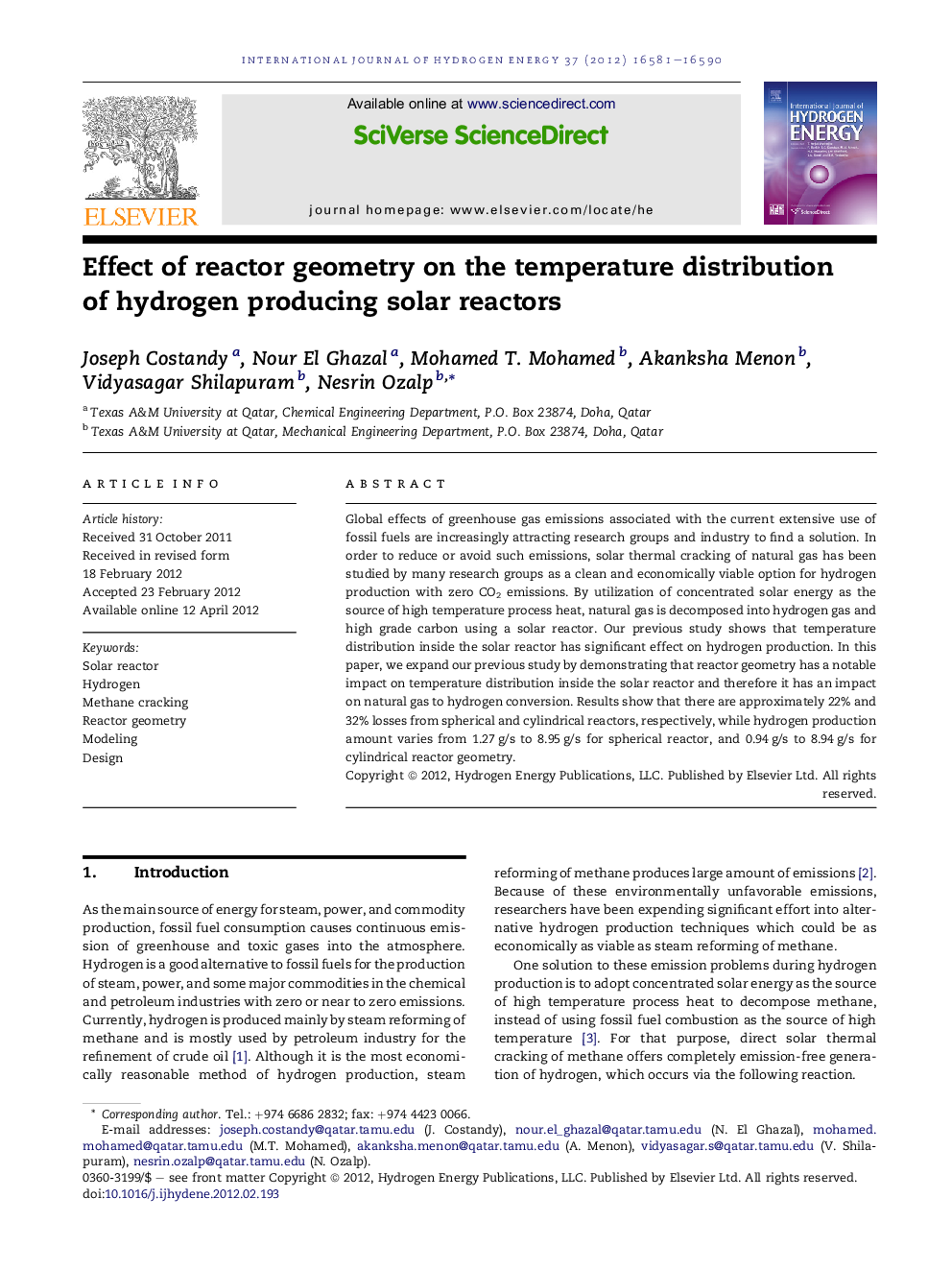| Article ID | Journal | Published Year | Pages | File Type |
|---|---|---|---|---|
| 1282190 | International Journal of Hydrogen Energy | 2012 | 10 Pages |
Global effects of greenhouse gas emissions associated with the current extensive use of fossil fuels are increasingly attracting research groups and industry to find a solution. In order to reduce or avoid such emissions, solar thermal cracking of natural gas has been studied by many research groups as a clean and economically viable option for hydrogen production with zero CO2 emissions. By utilization of concentrated solar energy as the source of high temperature process heat, natural gas is decomposed into hydrogen gas and high grade carbon using a solar reactor. Our previous study shows that temperature distribution inside the solar reactor has significant effect on hydrogen production. In this paper, we expand our previous study by demonstrating that reactor geometry has a notable impact on temperature distribution inside the solar reactor and therefore it has an impact on natural gas to hydrogen conversion. Results show that there are approximately 22% and 32% losses from spherical and cylindrical reactors, respectively, while hydrogen production amount varies from 1.27 g/s to 8.95 g/s for spherical reactor, and 0.94 g/s to 8.94 g/s for cylindrical reactor geometry.
